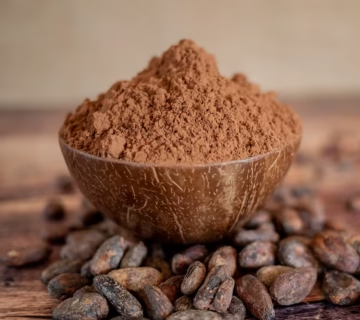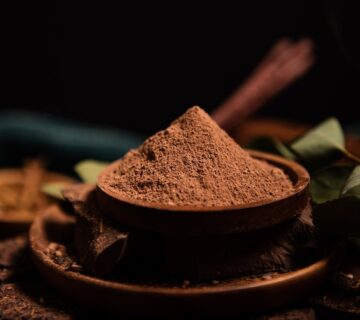Creating exceptional sauces and desserts requires more than just following recipes. In industrial kitchens and large-scale production facilities, ingredients must deliver consistent flavor, color, and texture every batch. Cocoa powder, often seen as a simple ingredient, is a cornerstone in chocolate sauces, dessert toppings, ganaches, and bakery fillings. Selecting the right cocoa powder can drastically affect your final product’s quality and your production efficiency.
For factory managers, procurement officers, and production supervisors, sourcing cocoa powder is not just a matter of price—it’s about reliability, functional performance, and supplier expertise. In our experience supplying manufacturing facilities across multiple sectors, the best results come from partnering with trusted suppliers like MT Royal, who provide a range of high-quality brands, including premium options such as Spanish-origin Latamarko.
In this guide, we’ll explore everything you need to know about cocoa powder for sauces and desserts: from definitions, benefits, and production tips to common pitfalls, supplier selection, and industry-specific insights.
Understanding Cocoa Powder for Industrial Dessert Applications
Cocoa powder is the dehydrated, finely ground form of cocoa beans after extracting cocoa butter. Its role in industrial dessert production goes beyond flavor—it also affects color, viscosity, texture, and solubility.
Cocoa Powder Types
- Natural Cocoa Powder
- Acidic with a robust, intense chocolate flavor
- Light brown color
- Commonly used in sauces and desserts where sharp chocolate notes are desired
- Dutched (Alkalized) Cocoa Powder
- Treated with alkalizing agents to neutralize acidity
- Darker color and smoother taste
- Preferred in chocolate sauces, dessert fillings, and applications where solubility and texture consistency are critical
LSI Keywords: industrial cocoa powder, chocolate dessert ingredients, Dutched cocoa for sauces, cocoa solubility, cocoa for ganache, dessert production efficiency
Benefits of High-Quality Cocoa Powder in Sauces and Desserts
Choosing the right cocoa powder provides multiple advantages for manufacturing operations:
1. Flavor Consistency
Flavor is non-negotiable in desserts and sauces. Premium cocoa powders, such as those from Latamarko, deliver a consistent chocolate profile, minimizing the need for adjustments during production and ensuring that your end product meets consumer expectations every time.
2. Texture and Solubility
Cocoa powder affects viscosity, mouthfeel, and emulsification in sauces. Dutched powders dissolve more easily in liquids, reducing clumping, streamlining mixing, and ensuring smooth, glossy sauces for desserts.
3. Color Uniformity
Consistency in color is critical for brand recognition, especially in ready-to-eat desserts and bakery products. High-quality cocoa powders maintain uniform darkness and prevent streaking or uneven coloring.
4. Operational Efficiency
Reliable cocoa powders reduce production interruptions, minimize waste, and optimize batch processing times. Factories that standardize their cocoa source often see faster mixing, fewer reworks, and smoother line operation.
At MT Royal, we supply manufacturers with a comprehensive range of cocoa powder brands, ensuring competitive pricing without compromising on functional performance. We’ve worked with dessert and sauce producers who experienced significant reductions in mixing time and rework by choosing consistently high-quality powders.
Common Pitfalls in Industrial Cocoa Procurement
Even experienced production teams can encounter issues when sourcing cocoa powder:
- Assuming all powders are interchangeable: Natural and Dutched cocoa behave differently in liquid sauces, ganaches, and dessert fillings. Using the wrong type can result in grainy texture or uneven color.
- Overlooking moisture and fat content: Excess moisture or varying fat levels can affect viscosity, solubility, and shelf life.
- Ignoring supplier consistency: Inconsistent batches can lead to costly production adjustments or rejected products.
- Focusing only on cost: Selecting the cheapest supplier without evaluating functional performance can create more expensive problems in the long run.
Selecting the Right Cocoa Powder Supplier: Step-by-Step Guide
Step 1: Define Product and Production Requirements
- Determine desired flavor intensity (natural vs. Dutched)
- Specify texture and solubility requirements for sauces and dessert fillings
- Consider color expectations and shelf-life needs
Step 2: Evaluate Supplier Capabilities
- Batch-to-batch consistency
- Food safety certifications (ISO 22000, HACCP, FSSC 22000)
- Delivery reliability and lead times
Step 3: Conduct Pilot Testing
Small-scale trials allow you to assess:
- Solubility and emulsification in your sauces and dessert bases
- Interaction with stabilizers, sugars, and dairy ingredients
- Color and flavor profile alignment with brand standards
Step 4: Implement Quality Monitoring
Establish standard QC checks for moisture, fat content, particle size, and pH. Continuous monitoring ensures ongoing product quality and reduces unexpected line stoppages.
Real-World Manufacturing Insights
A European dessert manufacturer producing chocolate ganache for packaged desserts struggled with uneven texture using generic cocoa powders. By switching to premium Latamarko cocoa, the plant achieved:
- Smooth, glossy ganache without additional stabilizers
- Consistent color and flavor across all batches
- Reduced production downtime and ingredient waste
Another example involves a sauce production facility that had difficulty dissolving natural cocoa in hot liquid bases. Partnering with MT Royal to source Dutched cocoa optimized for solubility eliminated clumping and improved mixing efficiency, resulting in 20% faster production cycles.
Comparison Table: Cocoa Powder Grades for Sauces and Desserts
| Feature | Natural Cocoa | Dutched Cocoa | Premium European (Latamarko) |
|---|---|---|---|
| pH Level | 5.0-6.0 | 7.0-8.0 | 7.5-8.0 |
| Color | Light brown | Dark brown | Deep dark brown |
| Flavor | Strong, acidic | Smooth, mild | Balanced, rich, consistent |
| Solubility in sauces | Moderate | High | Very high |
| Ideal for | Traditional sauces | Chocolate dessert fillings | Premium ganache, high-end desserts |
| Cost Efficiency | Moderate | Moderate | Premium |
Industry-Specific Considerations
- Batch Size Optimization: Large-scale dessert and sauce production benefits from suppliers who can meet volume demands without compromising consistency.
- Regulatory Compliance: Ensure cocoa powders comply with local and international food safety standards.
- Storage and Logistics: Controlled storage (temperature ≤20°C, low humidity) preserves flavor, color, and functional properties.
- Supplier Partnerships: Long-term collaboration with suppliers like MT Royal ensures predictable supply and access to high-quality options like Latamarko.
Tips and Pro Insights for Production Efficiency
- Pre-Dispersion: Pre-mixing cocoa powder in a small portion of liquid before full-scale incorporation prevents clumping in sauces.
- Temperature Management: Avoid high humidity and direct sunlight in storage to prevent powder degradation.
- Inventory Planning: Forecast cocoa requirements based on seasonal production trends to prevent shortages and ensure batch consistency.
- Supplier Documentation: Request certificates of analysis and batch records to validate quality and reduce QC workload.
Frequently Asked Questions (FAQ)
Q1: Can I mix different cocoa powders in sauces or desserts?
A: Mixing powders is possible but may compromise texture, color, and flavor. Standardizing with a single, high-quality supplier is recommended.
Q2: What makes Dutched cocoa better for dessert sauces?
A: Dutched cocoa dissolves more easily, has smoother flavor, and offers consistent color—essential for high-speed industrial processing.
Q3: Why consider Spanish-origin brands like Latamarko?
A: Latamarko provides superior solubility, flavor stability, and batch consistency—perfect for premium desserts or export-oriented products.
Q4: How should cocoa powder be stored in industrial settings?
A: Keep in cool, dry, airtight conditions away from strong odors. Proper storage prevents clumping, moisture absorption, and flavor degradation.
Closing Thoughts
Cocoa powder is a cornerstone of sauces and desserts, influencing flavor, texture, color, and production efficiency. Partnering with reliable suppliers like MT Royal ensures access to diverse cocoa brands suited for industrial applications, while premium options like Latamarko elevate the quality of high-end desserts and sauces.
For dessert manufacturers, every batch matters. Are you ensuring that your cocoa powder choice supports consistent flavor, smooth texture, and operational efficiency—or leaving it to chance? Your sourcing decisions today will define the success of every sauce, filling, and dessert tomorrow.







No comment